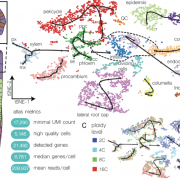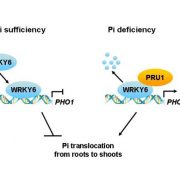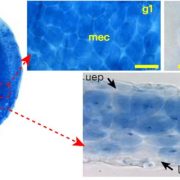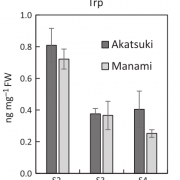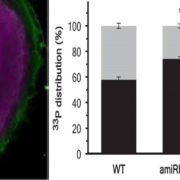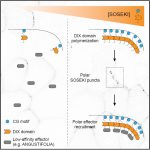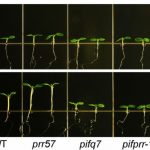Enhanced sustainable green revolution yield via nitrogen-responsive chromatin modulation in rice ($) (Science)
 The well-known success of the green-revolution was accomplished through the development of semi-dwarf grasses (rice and wheat), which led to decreased losses to lodging and higher yields; however, the benefits of these improved varieties depends on the application of nitrogen-rich fertilizer. As N-rich fertilizer is energetically costly and environmentally damaging, the quest is to sustain high yields but with a greater N-use efficiency. Wu et al. have identified a rice transcription factor that offers this promise. Rice plants carrying loss-of-function ngr5 (nitrogen-mediated tiller growth response 5) alleles show reduced tillering (branching) and yields, but elevated NGR5 levels (both through transgenics and in a high-yielding cultivar) was correlated with higher yields independent of N levels. The authors show that NGR5 recruits Polycomb Repressive Complex 2 to turn off tiller-inhibiting genes. Thus, the authors show “that increasing NGR5 expression or activity provides a breeding strategy to reduce nitrogen fertilizer use while boosting grain yield above what is currently sustainably achievable.” (Summary by Mary Williams) Science 10.1126/science.aaz2046
The well-known success of the green-revolution was accomplished through the development of semi-dwarf grasses (rice and wheat), which led to decreased losses to lodging and higher yields; however, the benefits of these improved varieties depends on the application of nitrogen-rich fertilizer. As N-rich fertilizer is energetically costly and environmentally damaging, the quest is to sustain high yields but with a greater N-use efficiency. Wu et al. have identified a rice transcription factor that offers this promise. Rice plants carrying loss-of-function ngr5 (nitrogen-mediated tiller growth response 5) alleles show reduced tillering (branching) and yields, but elevated NGR5 levels (both through transgenics and in a high-yielding cultivar) was correlated with higher yields independent of N levels. The authors show that NGR5 recruits Polycomb Repressive Complex 2 to turn off tiller-inhibiting genes. Thus, the authors show “that increasing NGR5 expression or activity provides a breeding strategy to reduce nitrogen fertilizer use while boosting grain yield above what is currently sustainably achievable.” (Summary by Mary Williams) Science 10.1126/science.aaz2046


